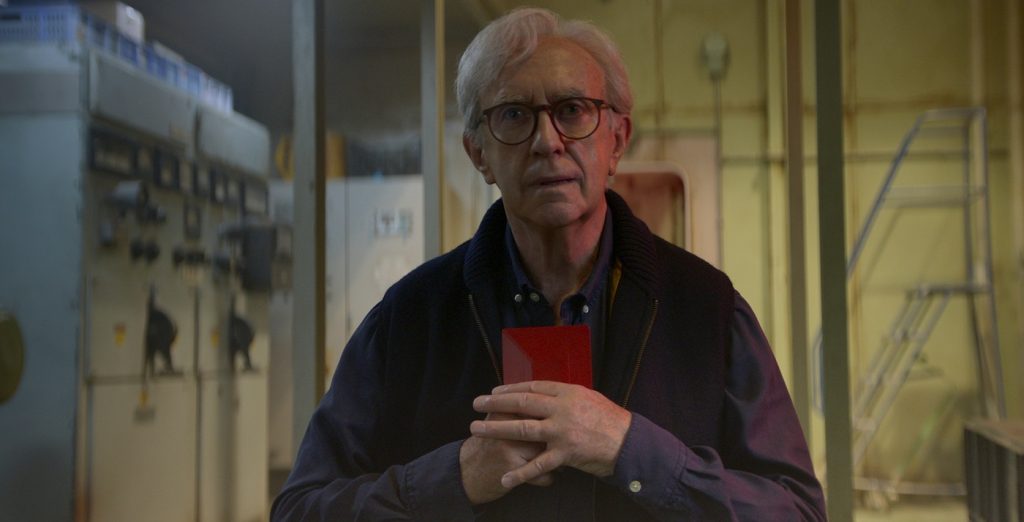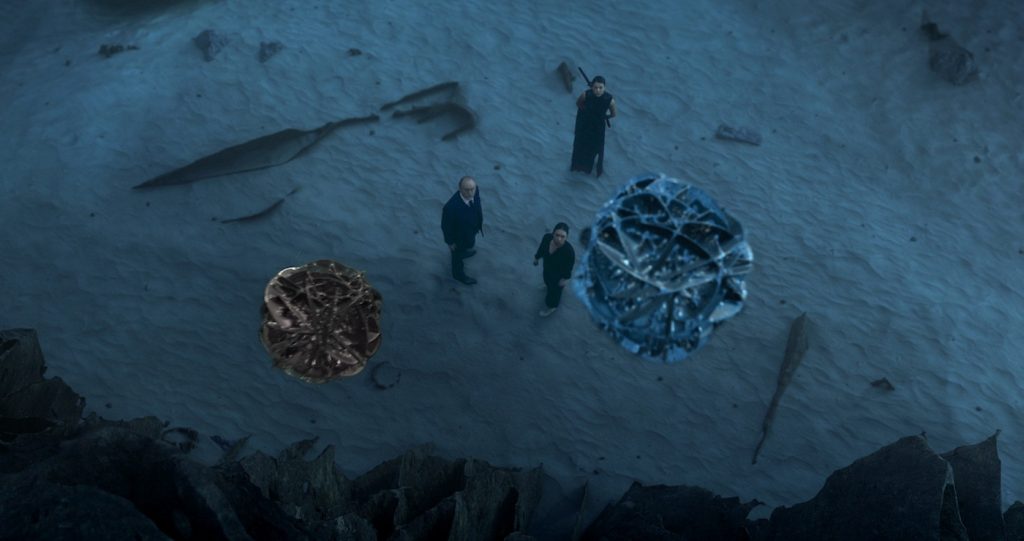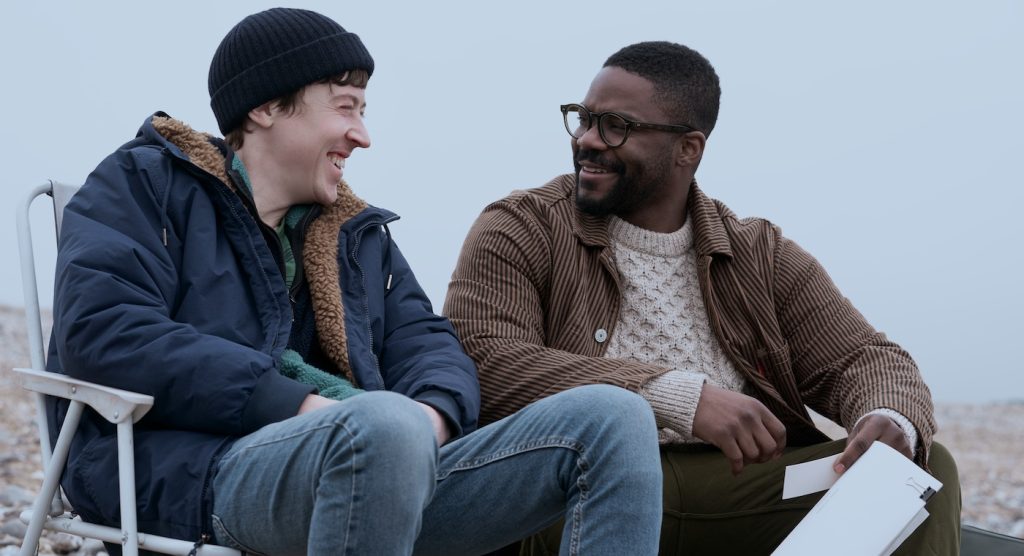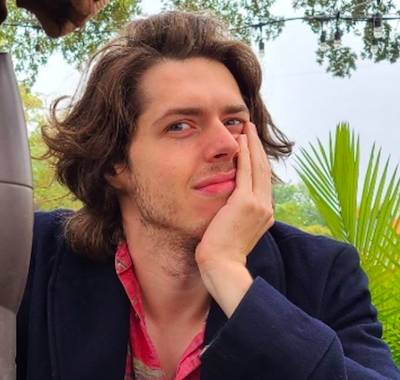Eye on the Emmys: “3 Body Problem” Cinematographer Martin Ahlgren on Lensing Series’ Wildest Set Piece
*Ahead of the 2024 Emmy Awards on September 15, we’re looking back at our interviews with some of this year’s nominees. Martin Ahlgren is nominated for Outstanding Cinematograph for a One Hour Series for episode 5, “Judgement Day.”
The scope of 3 Body Problem is planetary. Adapted by Game of Thrones creators David Benioff and D.B. Weiss, alongside Alexander Woo, Netflix’s ambitious sci-fi series presents a grand depiction of a war between humanity and aliens. Prior to the aliens’ arrival, a team of beleaguered scientists and a clandestine agency led by Thomas Wade (Liam Cunningham) engage in both intellectual and physical warfare as they try to find ways to cope with the mind-melting reality of their situation, including trying to ignore the problem considering the aliens won’t arrive on Earth for another 400 years. That’s when things start getting really scary.
Episode five, in particular, gets under your skin. Titled “Judgement Day,” it delivers a significant blow; a ship carrying the aliens’ human followers is destroyed in a spectacularly gruesome set piece. The morally conflicted Auggie Salaza (Eliza Gonzalez) is strongarmed into unleashing nanotech fibers that tear through everyone aboard the vessel. The resulting chaos is captured with horrifying clarity by the filmmakers, including director Minkie Spiro and cinematographer Martin Ahlgren.
Prior to joining the series, Ahlgren was already a fan of the original source material, novelist Liu Cixin’s acclaimed “Three-Body Problem” series. Ahlgren credits cinematographer Jonathan Freeman for developing “the cinematographic approach to it” in the earlier episodes. Collaborating as well with fellow DPs P.J. Dillon and Richard Donnelly, Ahlgren appreciated the “coherent overall approach to cinematography, but also with each episode, finding our own language.”
We spoke to Ahlgren about finding the language for an episode that needs very little of it to shock your system and what it was like working with this talented ensemble cast, including Jovan Adepo, Jess Hong, Alex Sharp, Benedict Wong, John Bradley, and more.
The attack on the ship Judgment Day is horrifying, especially because of how brightly lit the body horror looks. From the beginning, did you not want to hide the body count, as well as the visual effects, in darkness and shadows?
What’s funny with Dan [Weiss] and David [Benioff] is that they’re very averse to anything that kind of borders on camera trickery, and that was a good sounding board for me. Me and my episode director, Minkie Spiro, are both fans of composition and photography in general, and in finding interesting ways of telling the story. Working with Dan, David, and Alex [Woo], of course, it very much taught us quickly to film everything quite grounded. Although it’s obviously awful what’s happening, there is a fine line between showing the horror of what’s happening and veering into gore.

Where was that line for you?
One of the things we set up fairly early in the sequence is what is actually happening, and then after that, you’re kind of left to your imagination to a large extent, as well. Initially, we were working with our long-term storyboard artist, Stefan, and the three of us were coming up with fairly intricate, elaborate ways of how the slicing happens on different levels of the ship and on different people. It ended up being too gruesome in a way that we ended up pairing it back a bit.

What was a beat you all scaled back?
We had a sequence where someone comes out into the hallway, and Mike Evans (Jonathan Pryce) sees that person get stopped, fall to their knees, and the slicing happens. It becomes almost like a Damien Hirst art project or something like that, where you see the innards of someone as it’s slowly gliding apart. It was putting the emphasis in the wrong place in a way, so we scaled back from that because of it.

You said Dan and David are not fans of camera trickery. What’s an example of what you didn’t want to do with the camera?
There was a sequence during what we called the Sophon sequence – when Wade and Jin (Jess Hong) are in the virtual reality game and are being told about how two Sophons were sent to Earth. We wanted the camera to travel backward away from the window where Jack (John Bradley) has just been killed, and then suddenly have the camera flip over and continue forward—but now with the view upside down—into the car where an unsuspecting agent is keeping watch. As I was pitching this idea, I could see Dan and David starting to shift and go, “Well, yes, ok, but maybe not upside down!”

Going back to Judgement Day, what questions did you have for the VFX team and supervisor about what they needed?
We had a lot of discussions with visual effects, but we also had a physicist advisor on board as well, partly because of some of the space and quantum dimensions and more intricate elements. He became involved with the nanotech fibers and how they could potentially work as a real thing. A lot of what we were discussing was, like, should you see the lines as the fibers cut through the ship, or is it so fine that it cuts on a molecular level? Is it so fine that you don’t actually see the separation?
What about portraying the logistics of a ship hitting the bank of a canal?
When the ship hits the bank of the canal, it falls like a stack of plates, almost with the top plates going the furthest. So, there were a lot of the physical logistics that we were working out between me, Minkie, and the showrunners, but then also the visual effects team to figure out what parts we were doing practical.
There is a lot of blood in that sequence, to put it mildly. Cinematographers can have a love-hate relationship with shooting blood. What about yourself?
With blood, you can never go too dark, right? [laughs] It’s always the darker, the better. We did some camera tests to find what that should be in advance. To my memory, I can’t say exactly what we ended up with, but it was something that was discussed to some extent.
To contrast the chaos, there’s a lovely lit bar in Panama that Auggie visits before the attack. What mood did you want to strike there?
We wanted it to feel like Auggie in the jungle. It was shot on a soundstage in London, so we were building it all with palm trees and plants inside. We were looking for a way to convey the humidity and ominous feeling of night before this [attack] is about to go down. So, it was finding somewhat of a beauty in that, but then also some oppressive feeling as well.
What’s a challenge for you there as a cinematographer, just showing two people talking on the 3 Body Problem? Whether it’s the bar in Panama or two characters on a beach, what issues do you face?
Part of the challenge is to give the actors the space to find their moments and find the connection between each other. At the same time, it’s a visual medium and you still want to be telling the story with the camera. You’re always blocking scenes. Because we worked a lot together, it sort of becomes a bit of a dance that we do together with the actors, just figuring out how the camera language can help emphasize whatever is going on emotionally in a scene.

How do you achieve the best result there?
The best result is when you sort of echo or find some contrast or interplay between what’s going on in the scene and something that you’re doing visually. So, just because there are two people talking, I don’t think it needs to stop being cinematic. You still want to continue this visual trajectory of the whole film or show. Hopefully, it adds to the emotional quality of those scenes.
For more on big titles on Netflix, check these out:
“Stranger Things” Star Maya Hawke Teases Mind-Boggling Final Season
“Dead Boy Detectives” Trailer Unveils Netflix’s Supernatural Sleuthing Series
“Irish Wish” Director Janeen Damian Makes a Rom-Com Dream Come True with Lindsay Lohan
Featured image: 3 Body Problem. Episode 105 of 3 Body Problem. Cr. Courtesy of Netflix © 2024



